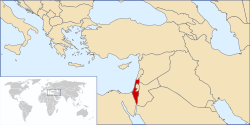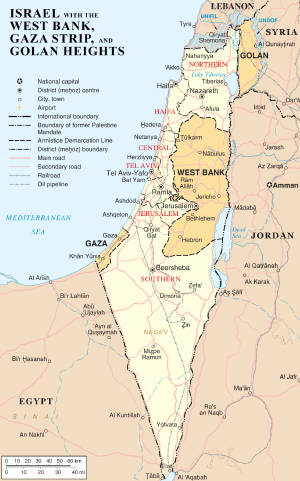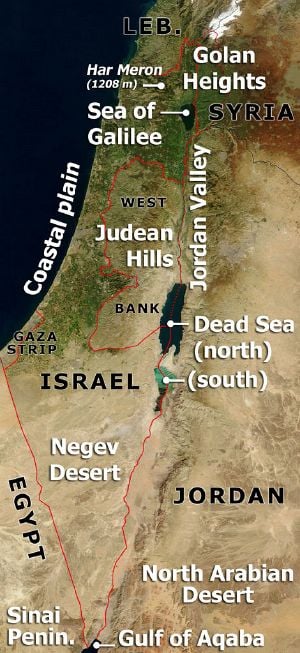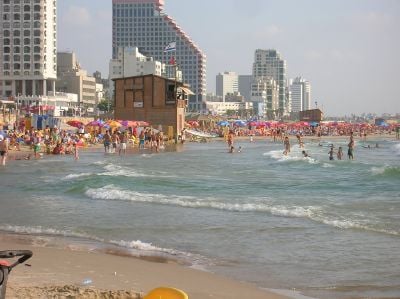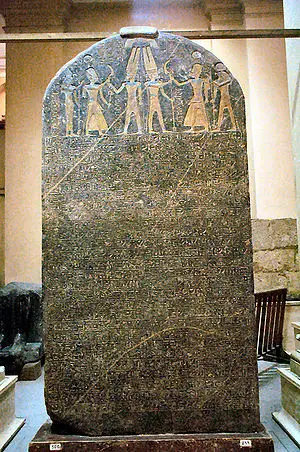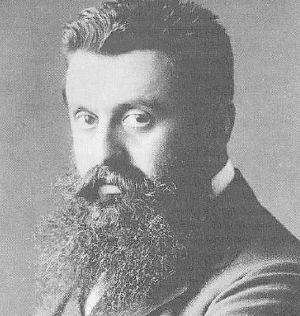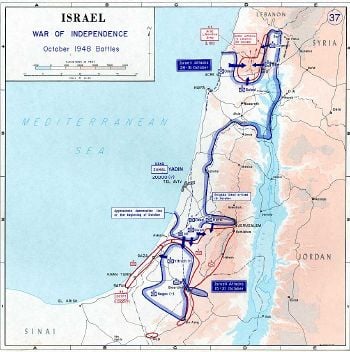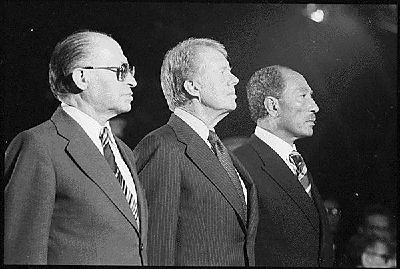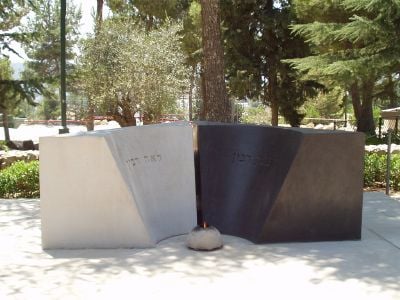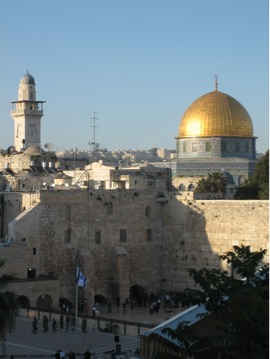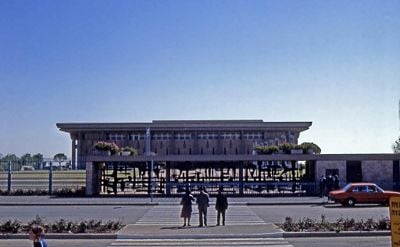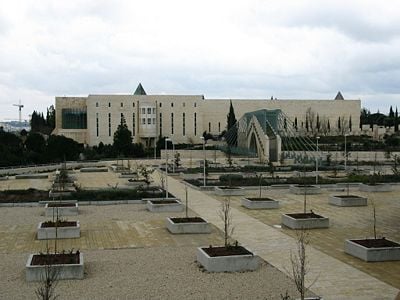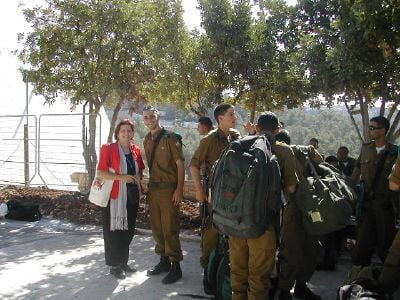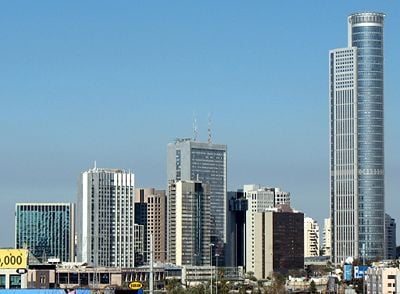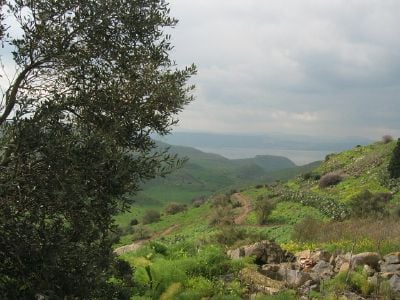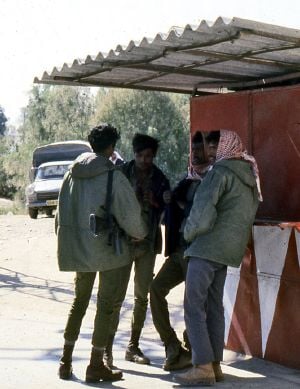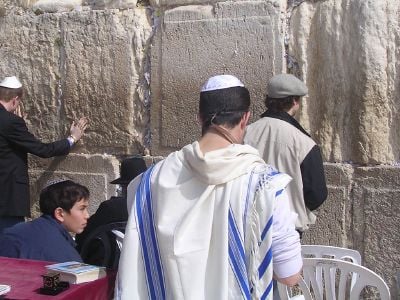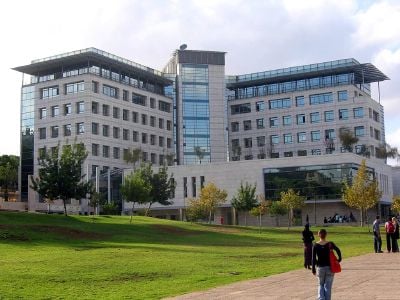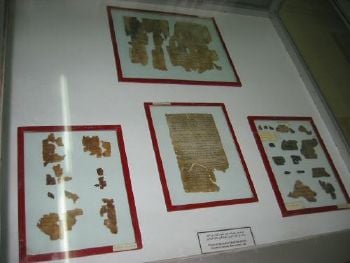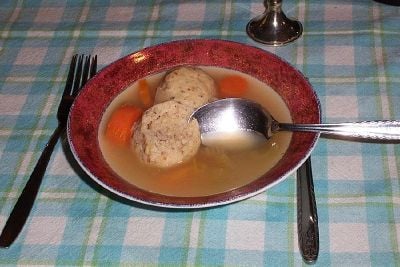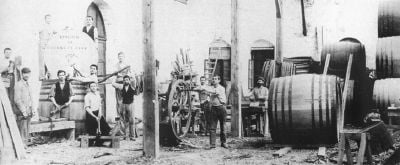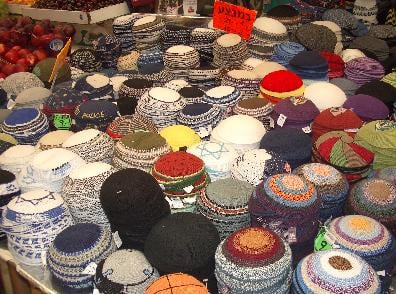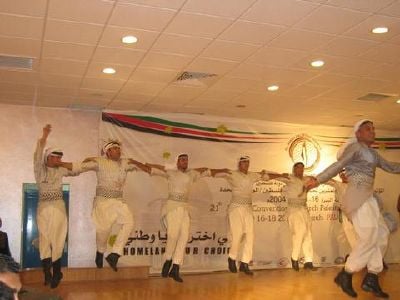Israel
| ◊ě÷į◊ď÷ī◊ô◊†÷∑◊™ ◊ô÷ī◊©÷į◊ā◊®÷ł◊ź÷Ķ◊ú‚Äé Medńęnat YisrńĀ'el ōĮŔéŔąŔíŔĄŔéō© ō•Ŕźō≥ŔíōĪŔéōßō¶ŔźŔäŔĄ Dawlat IsrńĀ ľńęl State of Israel |
||||||
|---|---|---|---|---|---|---|
|
||||||
| Anthem:¬†Hatikvah (◊Ē÷∑◊™÷ī÷ľ◊ß÷į◊ē÷ł◊Ē‚Äé) |
||||||
| Capital (and largest city) | Jerusalem[1] | |||||
| Official languages | Hebrew, Arabic (special status under Israeli law), English (most commonly used foreign language)[2] | |||||
| Ethnic groups  | 73.9% Jewish 21.1% Arab 5.0% other[3] |
|||||
| Demonym | Israeli | |||||
| Government | Parliamentary democracy[2] | |||||
|  -  | President | Isaac Herzog | ||||
|  -  | Prime Minister | Benjamin Netanyahu | ||||
|  -  | Knesset Speaker | Amir Ohana | ||||
| Legislature | Knesset | |||||
| Independence | from British Mandate for Palestine  | |||||
|  -  | Declaration | May 14, 1948  | ||||
| Area | ||||||
|  -  | Total 1 | 20,770 / 22,072 km² (149th) 8,019 / 8,522 sq mi  |
||||
|  -  | Water (%) | ~2% | ||||
| Population | ||||||
|  -  | 2022 estimate | 9,656,000[3] (99th) | ||||
|  -  | 2008 census | 7,412,200[4]  | ||||
|  -  | Density | 422/km² (35th) 1,093/sq mi |
||||
| GDP (PPP) | 2022[6] estimate | |||||
|  -  | Total | |||||
|  -  | Per capita | |||||
| GDP (nominal) | 2022[6] estimate | |||||
|  -  | Total | |||||
|  -  | Per capita | |||||
| Gini (2018) | 34.8[7] (48th) | |||||
| Currency | Shekel (‚ā™‚Äé) (ILS) |
|||||
| Time zone | IST (UTC+2) | |||||
|  -  | Summer (DST) | IDT (UTC+3) | ||||
| Internet TLD | .il | |||||
| Calling code | [[+972]] | |||||
| 1 | Excluding / Including the Golan Heights and East Jerusalem. | |||||
| 2 | Israeli population and economic data covers the economic territory of Israel, including the Golan Heights, East Jerusalem and Israeli settlements in the West Bank. | |||||
The State of Israel (in Hebrew "Medinat Yisra'el," or in Arabic "Dawlat IsrńĀ'ńęl") is a country in the Southwest Asian Levant, on the southeastern edge of the Mediterranean Sea.
Israel declared its independence in 1948. With a diverse population of primarily Jewish religion and background, it is the world's only Jewish state.
The land of Israel holds a special place in Jewish religious obligations, encompassing Judaism's most important sites (such as the remains of the First and Second Temples of the Jewish People). It is also considered a Holy Land to Christianity and Islam due to its importance in the lives of their religious founders, Jesus and Muhammad. It contains holy places sacred to these religions, including the Western Wall (Judaism), the Church of the Holy Sepulchre (Christianity) and the al-Aqsa Mosque with its iconic Dome of the Rock (Islam).
Israel is the only country in the Middle East considered to be a liberal democracy, having a broad array of political rights and civil liberties present. In addition, Israel is considered the most advanced in the region in terms of freedom of the press, commercial law, economic competition, and overall human development. Israelis have a high life expectancy, at 79.59 years. The nation has high education outcomes, with pupils staying at school longer than in other countries in the region, and has most of the top universities in the region. With limited natural resources, Israel has invested in its human capital to reach a situation where it's per capita GDP in 2005 reached $26,200 (28th in the world).
In spite of its high quality of life, Israel has been plagued by war. Ever since it came into existence by fighting off Arab armies in the midst of the 1948 War of Independence, Israel has continually fought for survival. It took over thirty years before Egypt agreed to act as a peaceful neighbor in 1979. In 1994 peaceful relations were established with Jordan. But peace with various Palestinian groups has been more elusive. Enmity between Muslim Palestinians and Jewish Israelis is rooted in the displacement of large populations (a cause similar to conflicts in Armenia and Azerbaijan, Indonesia, and Northern Ireland). Palestinian memories of the 1948 War of Independence are of the Nakba ("disaster" or "cataclysm"), when more than 700,000 were displaced by the victorious Israelis. Palestinians in the West Bank and Gaza Strip live under an occupation intensified by the tit-for-tat of Palestinian terrorism and Israeli reprisals and security clampdowns. Despite various political proposals to establish a Palestinian state existing in peace alongside Israel, no agreement has been reached.
The Israeli-Palestinian conflict touches the deepest levels of religious sentiment and tribal identity, and it solution is pivotal not only to prospects for peace in the Middle East but throughout the world. It is unlikely that its resolution can be achieved by political leaders alone; it will require the cooperation of religious and opinion leaders on both sides who can see the world without boundaries and barriers caused by faith, ethnic and national identity, and who can motivate their people to see the humanity of their opponents.
Geography
The name "Israel" is rooted in the Hebrew Bible, specifically Genesis 32:28, where Jacob is renamed Israel after successfully wrestling with an angel of God. The biblical nation fathered by Jacob was then called "The Children of Israel" or the "Israelites." The modern country was named State of Israel, and its citizens are referred to as Israelis in English.
Israel is bordered by Lebanon in the north, Syria and Jordan in the east, and Egypt in the southwest. It has coastlines on the Mediterranean Sea in the west and the Gulf of Eilat (also known as the Gulf of Aqaba) in the south.
During the Six-Day War of 1967, Israel captured the West Bank from Jordan, the Golan Heights from Syria, Gaza Strip (which was under Egyptian occupation), and Sinai Peninsula from Egypt. It withdrew from Sinai by 1982 and from the Gaza Strip by September 12, 2005. The future Palestinian region of the West Bank and the Gaza Strip remains to be determined. East Jerusalem has been under Israeli civil law, jurisdiction and administration since and the Golan Heights since 1981, though they have not been formally annexed.
The sovereign territory of Israel, excluding all territories captured by Israel in 1967, is 8019 square miles (20,770 square kilometers) in area, or slightly smaller than New Jersey in the United States.
Israel is divided east-west by a mountain range running north to south along the coast. Jerusalem sits on the top of this ridge, east of which lies the Dead Sea.
The numerous limestone and sandstone layers of the Israeli mountains allow the water to pour from the west flank to the east. Several springs have formed along the Dead Sea, each an oasis, most notably the oasis at Ein Gedi and Ein Bokek where settlements have developed.
Israel also has a number of large limestone karsts. These caves are around 68 ¬įF (20 ¬įC), although only one is open to the public. Very common all around the country are small natural caves that have been used for thousands of years as shelter, housing, storage rooms, barns and churches.
Israel is divided into four main geographical regions: the Israeli Coastal Plain, the central hills, the Jordan Rift Valley, and the Negev Desert.
The coastal plain stretches from the Lebanese border in the north to Gaza in the south, interrupted only by Cape Carmel at Haifa Bay. It is about 25 miles (40 kilometers) wide at Gaza and narrows toward the north to about three miles (five kilometers) at the Lebanese border. The region is fertile and humid, has had problems with malaria, and is known for its citrus and viniculture. The plain is traversed by several short streams.
East of the coastal plain lies the central highland. In the north lie the mountains and hills of Galilee; farther to the south are the Samarian Hills with numerous small, fertile valleys; and south of Jerusalem are the mainly barren hills of Judea. The central highlands average two thousand feet (610 meters) in height and reach their highest elevation at Har Meron, at 3,963 feet (1,208 meters) in Galilee near Safed.
East of the central highlands lies the Jordan Rift Valley, which is a small part of the 4,040-mile (6,500-kilometer)-long Great Rift Valley. In Israel the Rift Valley is dominated by the Jordan River, the Sea of Galilee (an important freshwater source also known as Lake Tiberias and to Israelis as Lake Kinneret), and the Dead Sea.
The Jordan River, Israel's largest river at 200 miles (322 kilometers), originates in the Anti-Lebanon Mountains and flows south through the drained Hulah Valley into the freshwater Lake Tiberias. With a water capacity estimated at 106 billion cubic feet (three cubic kilometers), it serves as the principal reservoir for Israel. The Jordan River continues from the southern end of Lake Tiberias (forming the boundary between the West Bank and Jordan) to the highly saline Dead Sea, which is 393 square miles (1,020 square kilometers) in size and, at 1,309 feet (399 meters) below sea level, is the lowest point in the world.
The Negev Desert comprises approximately 4,600 square miles (12,000 square kilometers), more than half of Israel's total land area. Geographically it is an extension of the Sinai Desert, forming a rough triangle with its base in the north near Beersheba, the Dead Sea, and the southern Judean Mountains, and it has its apex in the southern tip of the country at Eilat.
The coastal climate differs from that of the mountainous areas, particularly during the winter. The northern mountains can get cold, wet and often snowy, and even Jerusalem has snow every couple of years. The coastal regions, where Tel Aviv and Haifa are located, have a typical Mediterranean climate with cool, rainy winters and hot, dry summers. January is the coldest month with average temperatures ranging from 43 ¬įF to 59 ¬įF (6 ¬įC to 15 ¬įC) ,and July and August are the hottest months at 72 ¬įF to 91 ¬įF (22 ¬įC to 33 ¬įC) on average across the state. In Eilat, the desert city, summer daytime-temperatures at times reach 111 ¬įF to 115 ¬įF (44 ¬įC to 46 ¬įC). More than 70 percent of the rain falls between November and March. The most cultivated areas receive more than 12 inches (300 millimeters) of rainfall annually; about one-third of the country is cultivable.
Natural hazards include sandstorms during spring and summer, droughts, and periodic earthquakes. Thunderstorms and hail are common throughout the rainy season and waterspouts occasionally hit the Mediterranean coast, capable of causing only minor damage. However, supercell thunderstorms and a true F2 tornado hit the Western Galilee on April 4, 2006, causing significant damage and 75 injuries.

Limited arable land and natural freshwater resources pose serious constraints, while the nation must deal with on-going problems of desertification, air pollution from industrial and vehicle emissions, groundwater pollution from industrial and domestic waste, and toxic residue from chemical fertilizers, and pesticides.
Jerusalem has been continuously settled for more than three thousand years and is the location of many sites of historical and religious significance for Jews, Christians, and Muslims, including the Dome of the Rock, the Wailing Wall, the Church of the Holy Sepulchre, and the Tomb of the Virgin Mary. The Old City has the Jewish, Christian, Muslim, and Armenian quarters. Israel's "Basic Law" states that "Jerusalem, complete and united, is the capital of Israel," although the Palestinian Authority sees East Jerusalem as the future capital of Palestine. Metropolitan Jerusalem had a total population of 2,300,000 in 2006, including 700,000 Jews and 1,600,000 Arabs. Tel Aviv had a population of 3,040,400, Haifa had 996,000 and Beersheba had 531,600.
History
Pre-human occupation of the land area that became the state of Israel dates back to 200,000 B.C.E. Jewish tradition holds that the Land of Israel has been a Jewish Holy Land and Promised Land for four thousand years, since the time of the patriarchs (Abraham, Isaac, and Jacob). The land of Israel holds a special place in Jewish religious obligations, encompassing Judaism's most important sites (such as the remains of the First and Second Temples of the Jewish People). The first historical record of the word "Israel" comes from an Egyptian stele documenting military campaigns in Canaan. This stele is dated to approximately 1211 B.C.E.
Starting around the eleventh century B.C.E., the first of a series of Jewish kingdoms and states established intermittent rule over the region that lasted more than a millennium.
Under Assyrian, Babylonian, Persian, Greek, Roman, Byzantine, and (briefly) Sassanid rule, Jewish presence in the region dwindled because of mass expulsions. In particular, the failure of the Bar Kokhba's revolt against the Roman Empire in 32 C.E. resulted in a large-scale expulsion of Jews. It was during this time that the Romans gave the name ‚ÄúSyria Palaestina‚ÄĚ to the geographic area, in an attempt to erase Jewish ties to the land.
Nevertheless, the Jewish presence in Palestine remained constant. The main Jewish population shifted from the Judea region to the Galilee. The Mishnah and Jerusalem Talmud, two of Judaism's most important religious texts, were composed in the region during this period. The land was conquered from the Byzantine Empire in 638 C.E. during the initial Muslim conquests. The Hebrew alphabet was invented in Tiberias during this time. The area was ruled by the Omayyads, then by the Abbasids, Crusaders, the Kharezmians and Mongols, before becoming part of the empire of the Mamluks (1260‚Äď1516) and the Ottoman Empire in 1517.
Zionism and immigration
The first big wave of modern immigration, or Aliyah, started in 1881 as Jews fled growing persecution in Russia, or followed the socialist Zionist ideas of Moses Hess and others who called for the "redemption of the soil." Jews bought land from individual Arab landholders. After Jews established agricultural settlements, tensions erupted between the Jews and Arabs.
Theodor Herzl (1860‚Äď1904), an Austro-Hungarian Jew, founded the Zionist movement. In 1896, he published Der Judenstaat (‚ÄúThe Jewish State‚ÄĚ), in which he called for the establishment of a national Jewish state. The following year he helped convene the first World Zionist Congress. The Second Aliyah (1904‚Äď1914) brought an influx of around 40,000 Jews.
In 1917, the British Foreign Secretary Arthur J. Balfour issued the Balfour Declaration, which "view[ed] with favor the establishment in Palestine of a national home for the Jewish people." In 1920, Palestine became a League of Nations mandate administered by Britain. Jewish immigration resumed in the third (1919‚Äď1923) and fourth (1924‚Äď1929) waves after World War I. Riots in 1929 killed 133 Jews and 116 Arabs.
From the time Adolf Hitler came to power in Germany in 1933 until the beginning of World War II in 1939, a large number of German Jews migrated to Palestine in the Fifth Aliyah (1929-1939) despite British restrictions. Between 1939 and 1945 German Nazis killed more than six million Jews in the Holocaust, a horror that gave new impetus to the movement to form a Jewish state and that caused European nations to recognize the legitimacy of such a claim. The Jewish population in the region increased from 83,790 (11 percent) in 1922 to 608,230 (33 percent) in 1945.
Jewish underground groups
Many Arabs‚ÄĒopposed to the Balfour Declaration, the mandate, and the Jewish National Home‚ÄĒinstigated riots and pogroms against Jews in Jerusalem, Hebron, Jaffa, and Haifa. In response, Jewish settlers formed the Haganah in 1921 to protect settlements. Several Haganah members formed the militant group Irgun in 1931, which attacked the British military headquarters, the King David Hotel, which killed 91 people. A further split occurred when Avraham Stern left the Irgun to form Lehi, which was much more extreme, refused any cooperation with the British during World War II, and tried to work with the Germans to secure European Jewry's escape to Palestine.
Partition
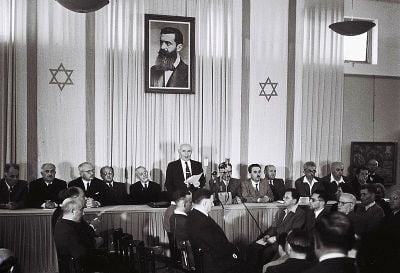
A truce between Arabs in Palestine and the British lasted through World War II, but when the war ended, violence increased, between Jews and Arabs and against the British. In 1947 the British government decided to withdraw from Palestine. The United Nations General Assembly approved a 1947 UN Partition Plan dividing the territory into two states, with the Jewish area consisting of roughly 55 percent of the land, and the Arab area consisting of roughly 45 percent. Jerusalem was to be designated as an international region administered by the UN to avoid conflict over its status. On November 29, 1947, David Ben-Gurion tentatively accepted the partition, while the Arab League rejected it. The Arab Higher Committee immediately ordered a violent three-day strike, attacking buildings, shops, and neighborhoods, and prompting insurgency organized by underground Jewish militias. These attacks soon turned into widespread fighting between Arabs and Jews, this civil war being the first "phase" of the 1948 War of Independence. The State of Israel was proclaimed on May 14, 1948, one day before the expiry of the British Mandate of Palestine. Israel was admitted as a member of the United Nations on May 11, 1949.
1948 war of independence
Over the next few days, approximately one thousand Lebanese, five thousand Syrian, five thousand Iraqi, and ten thousand Egyptian troops invaded the newly-established state. Four thousand Transjordanian troops invaded the Corpus separatum region encompassing Jerusalem and its environs, as well as areas designated as part of the Arab state. Volunteers from Saudi Arabia, Libya and Yemen helped. Israeli forces fought back, and captured significant amounts of territory that had been designated for the Arab state of Transjordan, as well as part of Jerusalem.
After numerous months of war, a ceasefire was declared and temporary borders, known as the Green Line, were instituted. Israel had gained an additional 23.5 percent of the Mandate territory west of the Jordan River. Jordan held the large mountainous areas of Judea and Samaria, which became known as the West Bank. Egypt took control of a small strip of land along the coast, which became known as the Gaza Strip.
Large numbers of the Arab population fled or were expelled from the newly-created Jewish state. This Palestinian exodus is referred to by Palestinians as the Nakba ("disaster" or "cataclysm"). Estimates of the final Palestinian refugee count range from 400,000 to 900,000 with the official United Nations count at 711,000. The unresolved conflict between Israel and the Arab world has resulted in a lasting displacement of Palestinian refugees. The entire Jewish population of the West Bank and Gaza Strip fled to Israel. Over the following years approximately 850,000 Sephardi and Mizrahi Jews fled or were expelled from surrounding Arab countries. Of these, about 600,000 settled in Israel; the remainder went to Europe and the Americas.
Suez crisis
In 1956, Egypt nationalized the Suez Canal, much to the chagrin of the United Kingdom and France. Israel, fearing Egypt's increase in power, staged an attack in the Sinai Desert. Several days later, Britain and France joined the offensive. The United Nations sent peacekeepers, who stayed in the region until 1967.
In 1961, the Nazi war criminal Adolf Eichmann, who had been largely responsible for the Final Solution, the planned extermination of the Jews of Europe, was captured in Buenos Aires, Argentina, by Mossad agents and brought to trial in Israel. Eichmann became the only person ever sentenced to death by the Israeli courts.
The Six-Day War
Tensions arose between Israel and her neighbors in May 1967. Syria, Jordan, and Egypt had been hinting at war and Egypt expelled UN Peacekeeping Forces from the Gaza Strip. When Egypt closed the strategic Straits of Tiran to Israeli vessels, and began massing large numbers of tanks and aircraft on Israel's borders, Israel preemptively attacked Egypt on June 5. In the ensuing Six-Day War, Israel defeated three large Arab states, conquered the West Bank, Gaza Strip, Sinai Peninsula, and Golan Heights. The Green Line of 1949 became the administrative boundary between Israel and the Occupied Territories. The Sinai was later returned to Egypt following the signing of a peace treaty.
Terrorism
The Arab League proceeded to put Israel in a state of siege. Arab terrorists hijacked Israeli airplanes. At the 1972 Munich Olympic Games, Palestinian militants held hostage and killed members of the Israeli delegation. Agents of Israel’s Mossad assassinated most of those who were involved in the massacre. On October 6, 1973, the day of the Jewish Yom Kippur fast, the Egyptian and Syrian armies launched a surprise attack against Israel. Egypt and Syria were repelled, and a number of years of relative calm ensued.
Peace with Egypt
In 1977 Egyptian president Anwar Sadat visited Jerusalem to talk with Israeli prime minister Menachem Begin. In 1978, U.S. president Jimmy Carter helped in the Camp David Accords between Sadat and Begin, who shared that year's Nobel Peace Prize. In March 1979, they signed the Israel-Egypt Peace Treaty. Israel withdrew from the Sinai Peninsula and evacuated the settlements established there during the 1970s. It was also agreed to lend autonomy to Palestinians across the Green Line.
Lebanon invaded
On July 7, 1981, the Israeli Air Force bombed the Iraqi nuclear reactor at Osiraq in an attempt to foil Iraqi efforts at producing an atomic bomb. In 1982, Israel launched an attack against Lebanon, which had been embroiled in the civil war since 1975, to defend Israel's northernmost settlements from terrorist attacks. After establishing a 40-kilometer barrier zone, the Israel Defense Forces captured Lebanon's capital Beirut, and expelled the Palestinian Liberation Organization from the country. Though Israel withdrew from most of Lebanon in 1986, a buffer zone was maintained until May 2000 when Israel unilaterally withdrew from Lebanon. A Palestinian uprising called the Intifadah began in 1987. Palestinians threw rocks at Israeli soldiers occupying the Gaza Strip and the West Bank. Israelis retaliated, and the violence escalated, resulting in hundreds of deaths. Israel proposed a peace initiative in 1989. This same year saw the beginning of a mass immigration by Soviet Jews.
Gulf War
During the 1990-1991 Gulf War, Iraq hit Israel with 39 Scud missiles, although Israel was not a member of the anti-Iraq coalition and was not involved in the fighting. The missiles did not kill Israeli citizens directly, but there were some deaths from incorrect use of the gas masks provided against chemical attack, one Israeli died from a heart attack following a hit, and one Israeli died from a Patriot missile hit. During the war, Israel provided gas masks for the Palestinians in the West Bank and Gaza. The PLO, however, supported Saddam Hussein. Palestinians in the West Bank and Gaza marched and famously stood on their rooftops while Scud missiles were falling and cheered Hussein. The first peace talks between Israel and Palestinian Arabs, represented by Yasser Arafat of the Palestinian Liberation Organization (PLO), in Madrid in October 1991, gave the Palestinians responsibility for the Gaza Strip and Jericho.
Oslo Accords
Further peace talks in 1993, known as the Oslo Accords, between Israeli prime minister Yitzhak Rabin, and Arafat, resulted in Israel handing over most of the Gaza Strip and parts of the West Bank to the Palestinian National Authority (PNA). In 1994, Jordan made peace with Israel. The initial wide public support for the Oslo Accords began to wane as Israel was struck by an unprecedented wave of attacks supported by the militant Hamas group, which opposed the accords.
On November 4, 1995, a Jewish nationalist militant named Yigal Amir assassinated Rabin. Likud‚Äôs Benjamin Netanyahu, elected prime minister in 1996, withdrew from Hebron and signed the Wye River Memorandum, in which the PLO agreed to get rid of its terrorist groups, to confiscate illegal weapons, and to imprison their own terrorists, in return for more land on the West Bank. A U.S.-Palestinian-Israeli committee was created to convene several times a month to prevent terrorism. During Netanyahu's tenure, Israel experienced a lull in attacks by Palestinian groups, but his government fell in 1999 to Ehud Barak of ‚ÄúOne Israel.‚ÄĚ
Barak withdrew from Lebanon in 2000, to frustrate Hezbollah attacks on Israel by forcing them to cross Israel's border. Barak and Palestine Liberation Organization head Yassir Arafat negotiated with U.S. President Bill Clinton at a summit at Camp David in July 2000. Barak offered a formula to create a Palestinian state, but Arafat rejected this deal. Palestinians began a second uprising, known as the Al-Aqsa Intifadah, just after the leader of the opposition, Ariel Sharon, visited the Temple Mount in Jerusalem.
Gaza withdrawal
Sharon was elected prime minister in March 2001, and was subsequently reelected, along with his Likud party in the 2003 elections. Sharon initiated an Israeli withdrawal from the Gaza Strip in 2005.
Israel began building the Israeli West Bank Barrier to defend against attacks by armed Palestinian groups. The barrier effectively annexes 9.5 percent of the West Bank, and creates hardships for Palestinians living near it. The international community and the Israeli far-left have criticized the wall, but it has significantly reduced the number of terrorist attacks against Israel.
Hamas, an Islamic militant group fighting to replace the state of Israel with an Islamic state, won a surprise victory in the Palestinian legislative election, in January 2006, taking 76 of the 132 seats in the chamber, while the ruling Fatah party took 43.
After Sharon suffered a severe hemorrhagic stroke, the powers of the office were passed to Ehud Olmert, who was designated the "acting" prime minister. On April 14, 2006, Olmert was elected prime minister after his party, Kadima, won the most seats in the 2006 elections.
On June 28, 2006, Hamas militants dug a tunnel under the border from the Gaza Strip and attacked an Israel Defense Forces post, capturing an Israeli soldier and killing two others. Israel bombarded Hamas targets as well as bridges, roads, and the only power station in Gaza.
A conflict between the Palestinian militant group Hezbollah and Israel began July 12, 2006, with a cross-border Hezbollah raid and shelling, which resulted in the capture of two and killing of eight Israeli soldiers. Israel initiated an air and naval blockade, airstrikes across much of the country, and ground incursions into southern Lebanon. Hezbollah continuously launched rocket attacks into northern Israel and engaged the Israeli Army on the ground with hit-and-run guerrilla attacks. A ceasefire came into effect on August 14, 2006. The conflict killed over one thousand Lebanese civilians, 440 Hezbollah militants, and 119 Israeli soldiers, as well as 44 Israeli civilians, and caused massive damage to the civilian infrastructure and cities of Lebanon and damaged thousands of buildings across northern Israel, many of which were destroyed.
By the end of 2007, Israel entered another conflict as a ceasefire between Hamas and Israel collapsed. The Gaza War lasted three weeks and ended after Israel announced a unilateral ceasefire. Hamas announced its own ceasefire, with its own conditions of complete withdrawal and opening of border crossings. However, violence has continued with Palestinian rocket attacks and Israeli attacks.
Government and politics
Israel is a democratic republic with universal suffrage that operates under a parliamentary system.
The president of Israel is head of state, serving as a largely-ceremonial figurehead. The president selects the leader of the majority party or ruling coalition in the Knesset as the prime minister, who serves as head of government and leads the cabinet. For a short period in the 1990s, the prime minister was directly elected. This change was not viewed a success and was abandoned. The 2007 president was Moshe Katsav, though the acting president was Dalia Itzik; the prime minister was Ehud Olmert.
Israel's unicameral legislative branch is a 120-member parliament known as the Knesset. Membership in the Knesset is allocated to parties based on their proportion of the vote. Elections to the Knesset are normally held every four years, but the Knesset can decide to dissolve itself ahead of time by a simple majority, known as a vote of no confidence. Twelve parties held seats in 2007.
Israel's judiciary is made of a three-tier system of courts. At the lowest level are magistrate courts, situated in most cities. Above them are district courts, serving both as appellate courts and as courts of first instance, situated in Jerusalem, Tel Aviv, Haifa, Be'er Sheva and Nazareth. At the top is the Supreme Court of Israel seated in Jerusalem, which serves a dual role as the highest court of appeals and as the body for a separate institution known as the High Court of Justice. This court has the unique responsibility of addressing petitions presented by individual citizens. The respondents to these petitions are usually governmental agencies. A committee composed of Knesset members, Supreme Court Justices, and Israeli Bar members carries out the election of judges. The Courts Law requires judges to retire at the age of 70. The chief justice of the Supreme Court, with the approval of the minister of justice, appoints registrars to all courts.
Israel is not a member of the International Criminal Court as it fears it could lead to prosecution of Israeli settlers in the disputed territories.
Legal system
Israel has not completed a written constitution. Its government functions according to the laws of the Knesset, including the "Basic Laws of Israel," of which there are presently 14. These are slated to become the foundation of a future official constitution. In mid-2003, the Knesset's constitution, law, and justice committee began drafting an official constitution.
Israel's legal system mixes influences from Anglo-American, continental and Jewish law, as well as the Declaration of the State of Israel. As in Anglo-American law, the Israeli legal system is based on the principle of precedent; it is an adversarial system, not an inquisitorial one, in the sense that the parties (for example, plaintiff and defendant) bring the evidence before the court. The court does not conduct any independent investigation.
Court cases are decided by professional judges. Additional continental law influences can be found in the fact that several major Israeli statutes (such as the contract law) are based on civil law principles. Israeli statute body is not comprised of codes, but of individual statutes. However, a civil code draft has been completed, and is planned to become a bill.
Religious tribunals (Jewish, Muslim, Druze and Christian) have exclusive jurisdiction on annulment of marriages.
Human rights
The Declaration of the Establishment of the State of Israel included a broad commitment to uphold the rights of its citizens. However, like many democracies, Israel often struggles with issues of minority rights, especially when it comes to the often contentious issues surrounding the treatment of Israel's large Arab minority, which constitutes 15 percent of Israel's population.
One of Israel's Basic Laws, that of human dignity and liberty, serves to defend human rights and liberties. Amnesty International has been highly critical of Israel's policies, but in 2006, Freedom House rated political rights in Israel as "1" (1 representing the most free and 7 the least free rating); civil liberties as "2." Freedom House classified Israel as "free," and most other countries in the Middle East as "Not Free." However, areas controlled by Israel through military occupation but not considered within the country's main territory were rated as "6," "5," and "Not Free" (and territories administered by the Palestinian Authority were rated as "5," "5," and "Partly Free").
Meanwhile, Sephardi Jews "have long charged that they suffered social and economic discrimination at the hands of the state's Ashkenazi establishment." B’tselem, the Israeli human rights organization, has stated that Israel has created in the West Bank a regime of separation based on discrimination, applying two separate systems of law in the same area and basing the rights of individuals on their nationality. Such criticism has also led to Israel's press being ranked as most free in the region.
Military
Israel's military consists of a unified Israel Defense Forces, known in Hebrew by the acronym Tzahal. There are other paramilitary agencies that deal with different aspects of Israel's security (such as Israel Border Police and Shin Bet). The Israel Defense Force is one of best-funded military forces in the Middle East and ranks among the most battle-trained armed forces in the world, having been involved in five major wars and numerous border conflicts. It relies heavily on high-technology weapons systems, some developed and manufactured in Israel for its specific needs, and others imported (largely from the United States).
Most Israeli men and women are drafted into the military at age 18. Immigrants sometimes volunteer to join. Most Israeli Arabs are not conscripted because of a possible conflict of interest, due to the possibility of war with neighboring Arab states. Compulsory service is three years for men, and two years for women. Men studying full-time in religious institutions can get a deferment from conscription. Most Haredi Jews extend these deferments until they are too old to be conscripted, a practice that has fueled much controversy in Israel.
While Israeli Arabs are not conscripted, they are allowed to enlist voluntarily. The same policy applies to the Bedouin and many non-Jewish citizens of Israel. After compulsory service, Israeli men become part of the reserve forces, and are usually required to serve several weeks every year as reservists until their 40s.
Nuclear capability
The International Atomic Energy Agency has stated outright that it believes Israel to possess nuclear weapons, an assertion the Israeli government has neither affirmed nor denied. Since the middle of the twentieth century, the Negev Nuclear Research Center has been operational and capable of producing weapons-grade nuclear material. Although the size of nuclear arsenal is debated, it is generally believed that Israel, which is not a signatory of the Nuclear Non-Proliferation Treaty, possesses at least one hundred devices.
Israel leads the Middle East in medium-range ballistic missile development. The Jericho series of ballistic missiles was begun in the 1970s, with three major designs built to date. The latest missile design, the Jericho III (based on the "Shavit" booster), has a conservative range estimate of 4,500 kilometers. Israel maintains a fleet of Dolphin-class submarines, widely suspected of being armed with Israeli-made medium-range (1,450 kilometers) cruise missiles capable of carrying nuclear warheads.
Foreign relations
Israel maintains diplomatic relations member states of the United Nations, as well as with the Holy See, Kosovo, the Cook Islands, and Niue. It has 181 diplomatic missions around the world.[8]
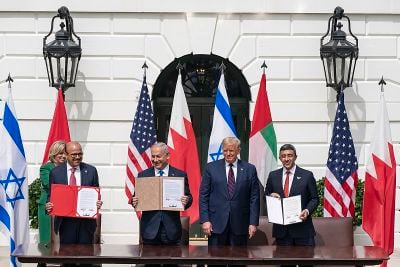
Only a few nations in the Arab League have normalized relations with Israel. Egypt and Jordan signed peace treaties in 1979 and 1994, respectively. In late 2020, Israel normalized relations with four more Arab countries: the United Arab Emirates and Bahrain in September (known as the Abraham Accords),[9] Morocco in December,[10] and Sudan signed the Accord in January 2021.[11][12]
Despite the peace treaty between Israel and Egypt, Israel is still widely considered an enemy country among Egyptians. Iran had diplomatic relations with Israel under the Pahlavi dynasty, but withdrew its recognition of Israel during the Islamic Revolution.
Israeli citizens may not visit Syria, Lebanon, Iraq, Saudi Arabia, and Yemen (countries Israel fought in the 1948 Arab‚ÄďIsraeli War that Israel does not have a peace treaty with) without permission from the Ministry of the Interior. As a result of the 2008‚Äď2009 Gaza War, Mauritania, Qatar, Bolivia, and Venezuela suspended political and economic ties with Israel,<refhttps://www.aljazeera.com/news/2009/1/17/qatar-mauritania-cut-israel-ties Qatar, Mauritania cut Israel ties] Al Jazeera, January 17, 2009. Retrieved August 15, 2022.</ref> though Bolivia renewed ties in 2019.[13]
China maintains good ties with both Israel and the Arab world.[14]
The United States and the Soviet Union were the first two countries to recognize the State of Israel, having declared recognition roughly simultaneously. Diplomatic relations with the Soviet Union were broken in 1967, following the Six-Day War, and renewed in October 1991.
The United Kingdom is seen as having a "natural" relationship with Israel on account of the Mandate for Palestine. Relations between the two countries were also made stronger by former prime minister Tony Blair's efforts for a two state resolution. Israel is included in the European Union's European Neighbourhood Policy (ENP), which aims at bringing the EU and its neighbors closer.
Economy
Israel is the most industrially and economically developed country in the Middle East. As Israel has liberalized its economy and reduced taxes and spending, the gap between the rich and poor has grown. Israel's economy was originally based on a socialist model, but has developed into a technologically-advanced market economy with substantial government participation.
The influx of Jewish immigrants from the former Soviet Union topped 750,000 during the period 1989‚Äď1999. Many of them were highly-educated, adding scientific and professional expertise of substantial value. The influx, coupled with the opening of new markets at the end of the Cold War, energized Israel's economy, which grew rapidly in the early 1990s. But growth began slowing in 1996 when the government imposed tighter fiscal and monetary policies and the immigration bonus petered out.
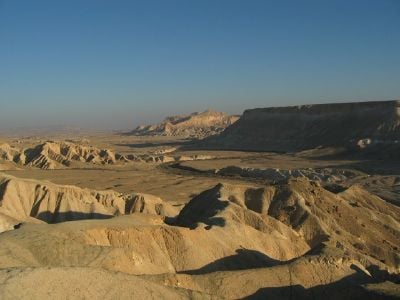
Despite limited natural resources, Israel has intensively developed its agricultural and industrial sectors. Israel is largely self-sufficient in food production except for grains and beef.
Export commodities include machinery and equipment, software, cut diamonds, agricultural products, chemicals, textiles and apparel. Export partners include the U.S., Belgium, and Hong Kong (5.6 percent).
Import commodities include raw materials, military equipment, investment goods, rough diamonds, fuels, grain, and consumer goods. Import partners include the U.S., Belgium, Germany, the United Kingdom, Switzerland, and China.
Israel usually posts sizable current account deficits, which are covered by large transfer payments from abroad and by foreign loans. Israel possesses extensive facilities for oil refining, diamond polishing, and semiconductor fabrication. Roughly half of the government's external debt is owed to the United States, and a large fraction of that is held by individual investors, via the Israel Bonds program. The state can borrow at competitive and sometimes below-market rates.
Israel receives more venture capital investment than any country in Europe, and has the largest number of start-up companies in the world after the United States. Israel produces more scientific papers per capita than any other nation, boasts one of the highest per capita rates of patents filed, and is ranked third in research and development spending.
Some land is privately owned and some is public property. Israel has a system of kibbutzim‚ÄĒcooperative farms in which property is collectively owned. Residents share chores, and receive housing, medical care, and education instead of wages. There are moshav farming communities in which each family owns a house and is responsible for an area of land, while products are sold collectively. According to the World Bank, Israel has the best regulations for businesses and strongest protections of property rights in the Greater Middle East.
Tourism in Israel includes a rich variety of historical and religious sites in the Holy Land, as well as modern beach resorts, archaeological tourism, heritage tourism, and ecotourism.
Israeli science is well known for its military technology, as well as its work in genetics, computer sciences, electronics, optics, engineering, agriculture, physics, and medicine. Biologists Avram Hershko and Aaron Ciechanover shared the Nobel Prize in Chemistry in 2004. Israeli-American psychologist Daniel Kahneman won the 2002 prize in economics, and Robert Aumann won the 2005 economics prize.
Israel's limited natural resources and strong emphasis on education have also played key roles in directing industry towards high technology fields. As a result of the country’s success in developing cutting-edge technologies in software, communication and the life sciences, Israel is frequently referred to as a "second Silicon Valley."
Demographics
The majority of Israel's population are recorded by the civil government as Jews. The rest of the population include a substantial number of Arabs, and the rest are non-Arab Christians and people who have no religion listed. Over the last decade, large numbers of migrant workers from Romania, Thailand, China, Africa, and South America have settled in Israel.
Ethnicity
The majority of Israelis are Jews. Arabs in Israel include descendants of those who remained within Israel's borders during the 1948 Arab-Israeli War, Palestinians who immigrated to Israel (especially since 1993) as well as Druze and Bedouins. About nine percent of Israeli Arabs are Christians of various denominations, mostly Catholics and Orthodox.
Relations between Jews and Arabs tend to be antagonistic, since each side sees the other as the aggressor. Relations within the Jewish community itself have been problematic. The Orthodox and ultra-Orthodox oppose compromise with the Palestinians and want a more strictly religious state.
Religion
Israel was founded to provide a national home, safe from persecution, to the Jewish people. Although Israeli law explicitly grants equal civil rights to all citizens regardless of religion, ethnicity, or other heritage, it gives preferential treatment to Jews who seek to immigrate to Israel as part of a governmental policy to increase the Jewish population. The criteria set forth by the Law of Return are controversial, in that it disqualifies individuals who are ethnically Jewish but who converted to another religion, and in that it grants immigrant status to individuals who are not ethnically Jewish but are related to Jews.
Traditionally, Jews are grouped into: Ashkenazim, Jews whose ancestors came from Germany, France, and Eastern Europe; Sephardim, those who settled in Israel from Morocco, Turkey, North Africa and the Mediterranean area, and are descendants of migrants from Spain and Portugal; Italkim, those from central Italy; Mizrahim, from Iran, Iraq, Yemen, and Syria; Beta Israel, from Ethiopia; and Indian Jews. Those with origins in Muslim and Arab lands are commonly called Sephardi by their Ashkenazi counterparts.
There are 14 diverse Buddhist groups active in Israel, catering to Israeli Jubus as well as a tiny number of Vietnamese Buddhists who came to Israel as refugees. A small Hindu presence exists, including Vaishnavite Krishna Consciousness devotees, Brahma Kumaris, and others. There are small numbers of Ismailis and Sikhs. The Bahá'í World Center is situated in Haifa, attracting pilgrims from all over the world. Apart from a few hundred staff, Bahá'ís do not live in Israel.
Language
Israel has two official languages: Hebrew, the state language spoken by most people; and Arabic, which is spoken by the Arab minority and by some members of the Mizrahi Jewish community. English is studied in school and is spoken by most as a second language. Other languages include Russian, Yiddish, Ladino, Romanian, Polish, French, Italian, Dutch, German, Amharic and Persian. American and European popular television shows are commonly presented. Newspapers can be found in all languages listed above as well as others.
Men and women
Women work in many fields. Israel elected a woman prime minister, Golda Meir, in 1969. Women are required to serve in the armed forces, but are not permitted combat. While under the Orthodox tradition, women and men live separate lives, and women are excluded from many traditional activities, women are generally accorded equal status to men.
Marriage and the family
Arranged marriages are uncommon, but there are social taboos against intermarriage. It is unusual for an observant Jew to marry someone secular. Divorce is legal, but under Orthodox Jewish law, men may prevent their ex-wives from remarrying. If the woman enters into another relationship, the courts do not recognize it, and any children are considered illegitimate, and cannot marry in Israel. The nuclear family is the most common domestic unit, with grandparents sometimes included. In the original kibbutz system, the husband and wife lived separately, but it became more common for children to live with their parents.
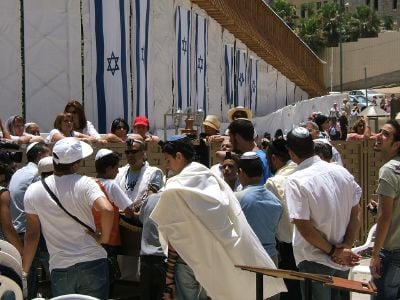
The mother takes responsibility for raising the baby, helped by the extended family. Jewish boys are circumcised eight days after birth. Collective child-care is common, especially for mothers who work outside the home. In kibbutzim, they stay separately from their parents, and usually see them only at night or on weekends. Children are not strictly disciplined. Arab boys and girls are raised separately, and girls are expected to help more with domestic chores.
According to Jewish law, when children reach the age of maturity (12 years for girls, 13 years for boys) they become responsible for their actions. At this point a boy is said to become ‚ÄúBar Mitzvah‚ÄĚ ("one to whom the commandments apply"); a girl is said to become ‚ÄúBat Mitzvah.‚ÄĚ Before this age, all the child's responsibility to follow Jewish law and tradition lies with the parents. After this age, the children are privileged to participate in all areas of Jewish community life and bear their own responsibility for Jewish ritual law, tradition, and ethics.
Education
Israeli pupils stay at school longest in the Greater Middle East and Western Asia. The education system consists of three tiers: primary education (grades 1-6), middle school (grades 7-9), then high school (grades 10-12). Compulsory education is from grades 1 to 9. The secondary education mostly consists of preparation for the Israeli matriculation exams (bagrut). The exams consist of mandatory subjects (Hebrew, English, mathematics, religious education, civics and literature), and some optional (chemistry, music, French). In 2003, 56.4 percent of Israeli grade 12 students received a matriculation certificate; 57.4 percent in the Hebrew sector and 50.7 percent in the Arab.
Any Israeli with a full matriculation certificate can proceed to higher education. Institutions generally require a certain grade average, as well as a good grade in the psychometric exam (similar to the American SAT). As all universities (and some colleges) are subsidized by the state, students pay only a small part of the actual cost as tuition. Israel has eight universities and several dozen colleges. According to Webometrics (2006), of the top ten universities in the Middle East, seven out of ten are in Israel, including the top four. The archaeology of Israel is researched intensively in the universities of the region and also attracts considerable international interest on account of the region's Biblical links.
Class
Most people in Israel have a similarly comfortable standard of living, although the majority of the poor are Palestinian, as are recent immigrants from Africa and Eastern Europe.
Culture
The culture of Israel is incredibly diverse, inseparable from the long history of Judaism and Jewish history which preceded it and from the local (Palestine/Land of Israel) traditions, whilst taking into account the cultures of the countries of the many millions of Jews who moved to Israel from around the globe. The government encourages and supports the arts. Israelis are very informal, and their standards might be considered rude elsewhere. The words "please" and "thank you" are used selectively.
Architecture
Israel's architecture is diverse, including a good deal of Islamic architecture, dating from 1250 to 1517. Most Israelis live in modern high-rise apartments. Some Jewish settlers in Palestinian territory, and many Palestinians, live in shacks, unfinished houses, or other modest dwellings.
Art
Although artist colonies in Safed, Jaffa, and Ein Hod have faded in numbers and importance since the 1970s, Israeli painters and sculptors continue to exhibit and sell their works worldwide. Tel Aviv, Herzliya, and Jerusalem have excellent art museums, and many towns and kibbutzim have smaller high-quality museums. The Israel Museum in Jerusalem houses the Dead Sea Scrolls along with an extensive collection of Jewish religious and folk art. The Museum of the Diaspora is located on the campus of Tel Aviv University. It should be noted that Israel has the highest number of museums per capita of any country in the world.
Cuisine
Jewish cuisine is a collection of international cookery traditions, loosely linked by kashrut, the Jewish dietary laws. Under Jewish laws, certain foods, notably pork and shellfish, are forbidden. Other foods, particularly wine and bread, are associated with Jewish rituals. Meat may not be combined with dairy in the same dish, and anything that contains animal blood is not kosher.
A number of soups are characteristically Jewish. The soup into which kneidlach (matzo balls or dumplings) are put, is the dish used most often on Saturdays, holidays, and other special occasions, particularly at Passover. The kneidlach are made by combining matzo meal (ground matzos), eggs, water, melted fat, pepper and salt. This mixture is then rolled into balls simmered in water and then put into soup. Sometimes kneidlach are fried in fat or cooked with pot roast.
Falafel, ground chickpeas mixed with onions and spices formed into balls and fried, are served in pita bread. Other dishes include tabuleh (a salad of bulgar wheat and chopped vegetables), hummus (chickpea paste), grilled meats, and eggplant. Cumin, mint, garlic, onion, and black pepper are used for flavoring. Baklava, which consists of flaky dough layered with honey and nuts, is a popular dessert. Coffee is extremely strong and thick and served in small cups.
The Sabbath, observed on Saturday, is ushered in on Friday evening with a family meal including an egg bread called challah. On Rosh Hashana, the Jewish New Year, sweet foods are eaten, symbolizing hope for a sweet coming year. Yom Kippur is a fast day. The meal the night before concentrates on relatively bland foods, so fasters will not become too thirsty. During Passover, Jews abstain from eating all leavened foods (bread, pasta, etc.). Instead they eat matzoh, a flat, cracker-like bread, is in memory of the Exodus from Israel, when the Jews could not wait for their bread to rise, and so carried it on their backs to bake in the sun.
Wine
Israel has wineries numbering in the hundreds and ranging in size from small boutique enterprises making a few thousand bottles per year to the largest producing over ten million bottles per year. Wine has been produced in Israel since Biblical times. The modern Israeli wine industry was founded in 1882 by Baron Edmond James de Rothschild, owner of the famous Bordeaux Chateau Ch√Ęteau Lafite-Rothschild, in support of a new wave of Jewish immigrants. Israel's move toward quality wines began with one fine wine‚ÄĒCarmel Special Reserve 1976 (released in 1980). Israel's main wine-producing areas remain the traditional coastal regions of Sharon & Shimshon, but the best quality wines are coming from the Upper Galilee, Golan Heights, Judean Hills & Ramat Arad.
Clothing
Men wear yarmulkes, sometimes called kippah, which are skullcaps, for prayer. More observant men wear them at all times. Conservative Jewish men wear black hats, whereas liberal Jews wear white crocheted caps. In the strictest Orthodox communities, men dress in black and wear long sidelocks. The majority of the population wears Western-style clothes. Many Arabs wear traditional Muslim dress‚ÄĒa turban or other headdress and long robes for men, and a long robe that covers the head and the entire body for women.
Literature
Israeli literature is mostly written in Hebrew and reflects the revival of the Hebrew language as a spoken language in modern times. Since the middle of the nineteenth century, the Hebrew language was increasingly used for speaking as well as writing modern forms of prose, poetry and drama. Every year thousands of new books are published in Hebrew and most of them are original to the Hebrew language. Shmuel Yosef Agnon won the Nobel Prize in Literature in 1966. Israelis are avid newspaper readers and there is an average daily circulation of 600,000 copies out of a population of approximately seven million. Major daily papers are published in Hebrew, Arabic, English and Russian, while many others come in French, Polish, Yiddish, Hungarian, and German.
Music
Israeli music is diverse and combines elements of both Western and Eastern music. It tends toward eclecticism and contains a wide variety of influences from today's Jewish diaspora. It also makes use of modern cultural importation. Hasidic songs, Asian and Arab pop, especially Yemenite singers, hip-hop and heavy metal are all part of the musical scene.
Israel's folk songs often deal with Zionist hopes and dreams and glorify the life of idealistic Jewish youth. Klezmer, a form of Jewish music that originated in Eastern Europe during the seventeenth century, is a blend of drums, violins, clarinets, keyboards, and tambourines that is common at weddings.
Israel is well-known for its classical orchestras, especially the Israeli Philharmonic Orchestra under the management of Zubin Mehta. Dudu Fisher, Itzhak Perlman and Pinchas Zukerman are some of the more renowned classical musicians from Israel. Also well-known is the Jerusalem Symphony, an orchestra associated with the Israel Broadcasting Authority, as do other musical ensembles. Almost every municipality has a chamber orchestra or ensemble, many of which boast the talents of gifted performers who arrived in the 1990s from the countries of the former Soviet Union.
Pop, rock, heavy metal, hip-hop and rap, trance (especially Goa trance and psychedelic trance) are all popular, as is Oriental Mizrahi music and ethnic music of various sorts. Israel has won the Eurovision Song Contest three times (1978, 1979, 1998).
Performing arts
The traditional folk dance of Israel is the Hora, originally an Eastern European circle dance. It is the most popular of Israeli folk dances, and is usually performed to Israeli folk songs, typically to the music of Hava Nagila. Israeli folk dancing today is choreographed for recreational as well as performance dance groups. The Palestinian population's folk dance is the Dabke, a dance of community, often performed at weddings.
Modern dance in Israel is flourishing. ChoreographerOhad Naharin and the Batsheva Dance Company and the Bat-Dor Dance Company are well known.
Theatre covers the entire range of classical and contemporary drama in translation, as well as plays by Israeli authors. Of the three major repertory companies, the most famous, Habima Theater, was founded in 1917. Jewish theater tends to be melodramatic, although contemporary productions adopt Western theatrical conventions and deal with social issues. Productions are staged in Russian and English as well as in Hebrew and Arabic. The film industry, also thriving, is best known for its documentaries, including Yaakov Gross's Pioneers of Zion, produced in 1995, and Toward Jerusalem, Ruth Beckermann's 1992 production.
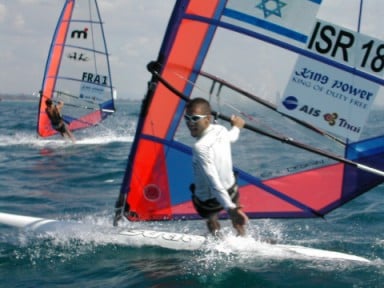
Sports
The Israeli sporting culture is much like that of European countries. The Israeli athletic tradition precedes the establishment of the state of Israel. While football (soccer) and basketball are considered the most popular sports in Israel, the nation has attained achievements in American football, handball and athletics. Israelis are involved in hockey, rugby, and, as exemplified by Israeli-born Sagi Kalev, bodybuilding.
Notes
- ‚ÜĎ The Jerusalem Law states that "Jerusalem, complete and united, is the capital of Israel" and the city serves as the seat of the government, home to the President's residence, government offices, supreme court, and parliament. However, the United Nations and many nations refused to accept the Jerusalem Law and maintain their embassies in other cities such as Tel Aviv. Countries that do recognize Jerusalem include Australia (West Jerusalem), Russia (West Jerusalem), the Czech Republic (West Jerusalem), Honduras, Guatemala, Nauru, and the United States. In September 2020 it was reported that Serbia would be moving its embassy from Tel Aviv to Jerusalem.
- ‚ÜĎ 2.0 2.1 Central Intelligence Agency, Israel The World Factbook Retrieved March 19, 2023.
- ‚ÜĎ 3.0 3.1 Latest Population Statistics for Israel Jewish Virtual Library. Retrieved March 19, 2023.
- ‚ÜĎ The 2008 Census of Population Central Bureau of Statistics. Retrieved March 19, 2023.
- ‚ÜĎ 5.0 5.1 5.2 5.3 World Economic Outlook database: Israel International Monetary Fund. Retrieved March 18, 2023.
- ‚ÜĎ 6.0 6.1 World Economic Outlook (April 2022) International Monetary Fund. Retrieved August 15, 2022.
- ‚ÜĎ Income inequality OECD. Retrieved March 19, 2023.
- ‚ÜĎ Israel's Diplomatic Missions Abroad Israel Ministry of Foreign Affairs. Retrieved August 15, 2022.
- ‚ÜĎ Oren Liebermann, Two Gulf nations recognized Israel at the White House. Here's what's in it for all sides CNN, September 16, 2020. Retrieved August 15, 2022.
- ‚ÜĎ Morocco latest country to normalise ties with Israel in US-brokered deal BBC, December 10, 2020. Retrieved August 15, 2022.
- ‚ÜĎ Jennifer Hansler, Trump announces that Israel and Sudan have agreed to normalize relations CNN, October 23, 2020. Retrieved August 15, 2022.
- ‚ÜĎ Sudan quietly signs Abraham Accords weeks after Israel deal Reuters, January 7, 2021. Retrieved August 15, 2022.
- ‚ÜĎ Paola Flores, Bolivia to renew Israel ties after rupture under Morales ABC News, November 28, 2019.
- ‚ÜĎ Mercy A. Kuo, Israel-China Relations: Innovation, Infrastructure, Investment The Diplomat, July 17, 2018. Retrieved August 15, 2022.
ReferencesISBN links support NWE through referral fees
- Dever, William G. Who Were the Early Israelites, And Where Did They Come From? Grand Rapids, MI: William B. Eerdmans Pub. Co., 2003. ISBN 0802809758
- Finkelstein, Israel, and Neil Asher Silberman. The Bible Unearthed: Archaeology's New Vision of Ancient Israel and the Origin of its Sacred Texts. New York: Free Press, 2001. ISBN 0684869128
- Heller, Joseph. The Birth of Israel, 1945-1949: Ben-Gurion and His Critics. Gainesville, FL: University Press of Florida, 2000. ISBN 978-0813017327
- Isserlin, B. S. J. The Israelites. New York: Thames and Hudson, 1998. ISBN 0500050821
- Kirsch, Jonathan. King David: The Real Life of the Man Who Ruled Israel. New York: Ballantine Books, 2000. ISBN 0345432754
- Kitchen, K. A. On the Reliability of the Old Testament. Grand Rapids, MI: William B. Eerdmans Pub. Co., 2003. ISBN 0802849601
- Kohen, Asher, and Bernard Susser. Israel and the Politics of Jewish Identity: The Secular-Religious Impasse. Baltimore, MD: The Johns Hopkins University Press, 2000. ISBN 0801863457
- Oren, Michael B. Six Days of War: June 1967 and the Making of the Modern Middle East. Oxford: Oxford University Press, 2002. ISBN 0195151747
- Said, Edward W. The End of the Peace Process: Oslo and After. London: Granta, 2002. ISBN 1862075239
External links
All links retrieved December 13, 2024.
- Israel ‚Äď CIA World Factbook
- Israel ‚Äď U.S. State Department
- Israel country profile ‚Äď BBC News
- Israel Wing ‚Äď Jewish Virtual Library
- Israel information ‚Äď Middle-East-Info.org
Credits
New World Encyclopedia writers and editors rewrote and completed the Wikipedia article in accordance with New World Encyclopedia standards. This article abides by terms of the Creative Commons CC-by-sa 3.0 License (CC-by-sa), which may be used and disseminated with proper attribution. Credit is due under the terms of this license that can reference both the New World Encyclopedia contributors and the selfless volunteer contributors of the Wikimedia Foundation. To cite this article click here for a list of acceptable citing formats.The history of earlier contributions by wikipedians is accessible to researchers here:
- Israel  history
- Geography_of_Israel  history
- Negev  history
- 1948_Arab-Israeli_War  history
- Religion_in_Israel  history
- Demographics_of_Israel  history
- Culture_of_Israel  history
- Jewish_cuisine  history
- Israeli_wine  history
The history of this article since it was imported to New World Encyclopedia:
Note: Some restrictions may apply to use of individual images which are separately licensed.


